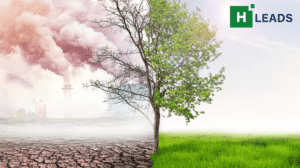Forty six percent of the 1.7 million children infected with HIV in 2020 had no access to life-saving treatments.
HIV has infected more than 75 million people and caused the death of around 30 million people since the epidemic began 40 years ago. In 2020, the number was 37 million, out of which more than 20 million – 54 per cent – were women and children.
Kruxd examines recent trends in HIV cases and treatment for this demographic around the world.
Is everyone getting treatment?
AIDS management primarily includes the use of Antiretroviral Therapy (ART) which has been in use for 35 years. ART is a cocktail of drugs which fight HIV and lower the chances that the virus will become resistant to treatment.
In 2020, only 54 per cent of all the children living with HIV across the world received ART. The percentage stood at more than 70 per cent among adults.
Use of ART to treat women and children has witnessed a spike over the last decade. In 2020, 79 per cent women received ART, up from 26 per cent in 2010. In spite of this, there are still 4,000,000 women and 780,000 children without access to the therapy.
Do ARTs help?
ART has a considerable effect in reducing viral load. Data with Joint United Nations Programme UNAIDS reveals that of the 15.3 million HIV positive women who received ART in 2020, 13.9 million – over 90 percent – showed a significant reduction in the amount of virus in their body. Among children, the reduction in the viral load was seen in 75 per cent of the 920,000 cases. If handled effectively, viral suppression following antiretroviral therapy lends strength to a patient’s weakened immune system.
ART’s ability to reduce viral loads, especially in vulnerable population groups, is thus seen as a powerful reason to speed up accessibility to millions still without access to the drug.
ART and Pregnancy
Pregnant women form a significant portion of the HIV infected population as the majority of them are diagnosed with the virus for the first time during pregnancy. It’s extremely important to take care of the HIV positive mothers as the vertical transmission – mother to child – of the virus is not only possible throughout the pregnancy but also during childbirth and breastfeeding.
Out of 1.4 million pregnant women who needed antiretroviral therapy in 2010, only 600,000 received it – less than 45 per cent. This resulted in a meagre 12.5 per cent fall in new HIV infections among children between 2010 and 2011.
From 2010 to 2020, treatment coverage among pregnant women has increased from 44 per cent to 85 per cent, leading to a 53 per cent drop in new HIV infections among children.
Where do we go from here?
Evidently, the pace of treatment coverage needs to pick up in order to prevent detrimental fallout on mothers and children. A majority of these infections can be avoided if adolescent girls and women have universal access to HIV testing, prevention, and treatment services, as well as to the support they require to remain in preventive care or on HIV treatment throughout pregnancy and breastfeeding.
UNAIDS has been unable to keep pace with its targets. Its Start Free, Stay Free, AIDS Free campaign had aimed to reduce new infections among children to 40,000 in 2020, and provide HIV treatment coverage to 1.4 million HIV-positive children. But the year witnessed 150,000 new infections, an excess of 110,000, while only 920,000 of the 1400,000 received treatments.
The challenge therefore remains to further accelerate treatment coverage in order to meet missed targets as well as stay on course for the goals set for 2026. UNAIDS’ Global Aids Strategy aims to achieve three goals: increasing equitable and equal access to HIV services and solutions, breaking down barriers to HIV outcomes, and fully resource and sustain efficient HIV responses, integrating them into systems for health, social protection, humanitarian settings, and pandemic response.

















